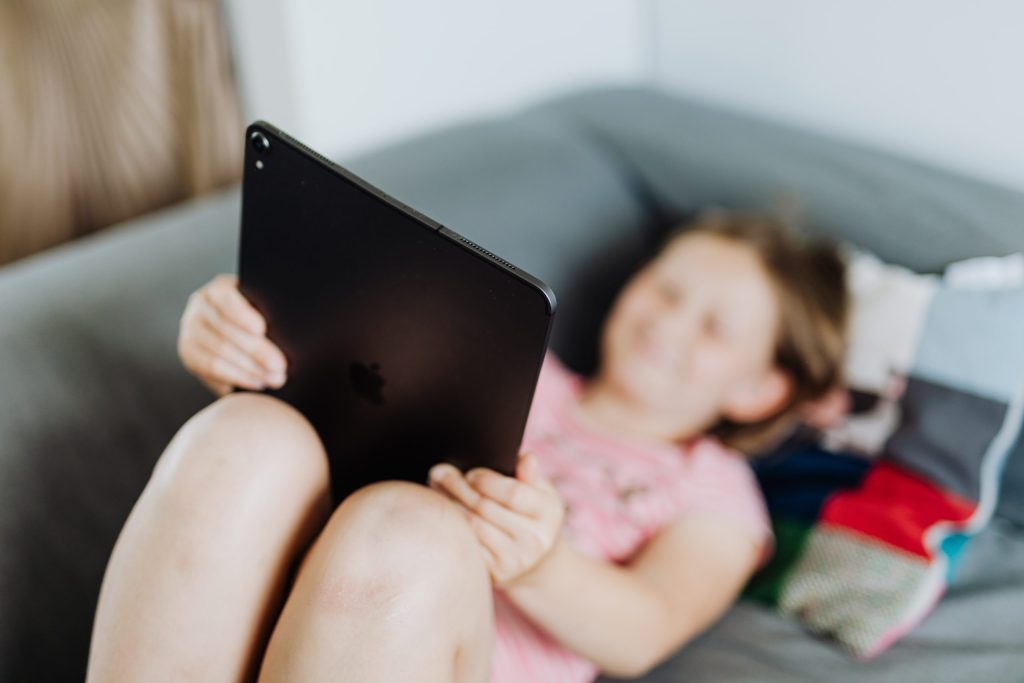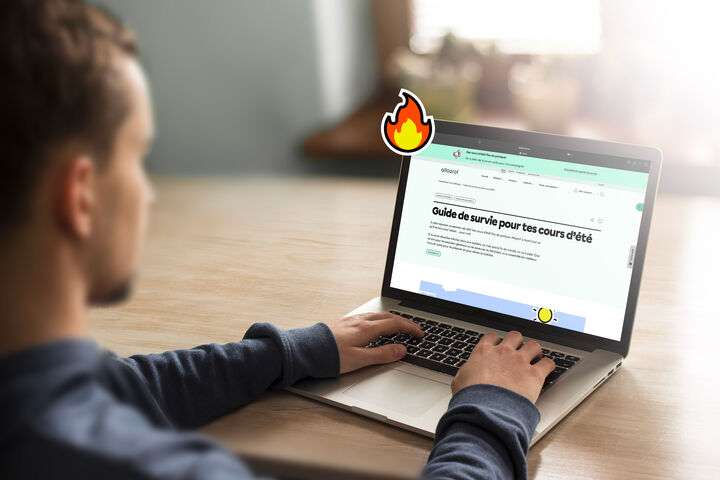Par Myra Auvergnat-Ringuette, avec la collaboration de Martine Rioux
L’enseignement à distance est un défi pour tous, mais la tâche est d’autant plus complexe avec les plus jeunes. Comment faire pour que la classe en ligne soit motivante, pour garder l’attention des élèves et rendre les apprentissages plus actifs et engageants? Deux enseignantes du primaire nous ont partagé leurs conseils. Voici ceux de Myra Auvergnat-Ringuette, enseignante de 4 année à l’Externat St-Jean-Berchmans, après ceux de Catherine Lapointe.
L’enseignement en ligne avec les plus jeunes se déroule généralement à raison d’une heure en avant-midi et d’une heure en après-midi, puis du travail autonome et des cours de spécialité (éducation physique, anglais, etc.) qui ont gardé le même horaire qu’à l’école. L’enseignante prévoit aussi des moments de disponibilité pour répondre aux questions des élèves.
Être à l’écoute (des parents et des élèves)
- En enseignement à distance, et surtout avec les plus petits, il est important de faire équipe avec les parents. Il est plus nécessaire que jamais de miser sur la coéducation, sans surcharger les parents non plus. Par exemple, lors d’un moment de bascule vers l’enseignement à distance, Myra invite les parents à la première séance du matin pour les rassurer et les invite à poser leurs questions en groupe.
- Afin de recueillir rapidement le pouls auprès des parents pour savoir « comment ça va », Myra utilise un formulaire Google qu’elle modifie et leur envoie périodiquement. Voici un exemple que vous pouvez copier et adapter : Questionnaire Parent : expérience d’apprentissage en ligne
- Myra utilisait déjà un autre formulaire Google en classe pour établir l’indice de bonheur de la classe. Il peut aussi être utilisé à distance. Ce sont alors les élèves qui répondent. Voici l’exemple qu’elle propose : Questionnaire Élève : indice de bonheur
Mettre en action
- Utiliser le clavardage. Dans certaines applications de vidéoconférence, les élèves peuvent écrire directement à l’enseignant sans que les autres élèves voient les messages. Il est alors possible de demander aux élèves de répondre par écrit à des questions simples. L’enseignant encourage alors tous les élèves à répondre.
- Faire des quiz. Les élèves adorent répondre à des questionnaires, ils s’engagent pour répondre. La plupart des outils de questionnaires présentent aussi des éléments de ludification qui facilitent la motivation. Cela permet du même coup de valider rapidement leur compréhension de certaines notions.
Limiter la nouveauté
- Dans la mesure du possible, garder le même horaire, les mêmes routines, que les élèves connaissaient en classe dans le virtuel.
- Attention à la transmission de nouvelles notions à distance. Dans ces moments, il faut expliquer davantage, modéliser, répéter et expliquer encore.
Socialiser
- Une fois qu’on a pris le temps de bien expliquer le fonctionnement des sous-groupes, de bien décrire les tâches à accomplir et les résultats attendus, le travail en sous-groupe s’avère une bonne façon de permettre aux élèves de discuter, de collaborer. Il est alors possible pour l’enseignant de circuler entre les équipes, d’écrire un message à tous en même temps pour leur rappeler qu’il leur reste X minutes, etc. C’est bon pour la motivation! Parfois, l’enseignante laisse le choix des équipes aux élèves, d’autres fois, elle impose des équipes ou elle laisse le hasard choisir.
Donner un plan de travail clair
- Diviser les tâches en petits morceaux qui seront plus faciles à réaliser par les élèves de façon autonome. Donner le plus de consignes possibles lors des séances de cours en ligne et même enregistrer les consignes que les élèves pourront écouter en asynchrone. Donner des exemples concrets des résultats attendus. Nommer l’intention, la répéter.
- Tenir compte (essayer du moins!) de tous les contextes familiaux. Par exemple, plusieurs élèves n’ont pas de soutien parental pour réaliser le plan de travail. Ils doivent être en mesure de le compléter seul.
- Vérifier (ou demander aux parents de le faire) que le plan de travail est fait. Personnellement, je donne une partie à réaliser de façon numérique que je vérifie et je laisse les parents vérifier les cahiers ou feuilles. Sans toujours penser à l’évaluation. Penser plutôt à garder des traces des progrès des élèves.
Par dessus tout, il faut se rappeler que tout le monde fait de son mieux en ce moment. La situation est loin d’être idéale. Enseignants comme élèves préfèreraient être en classe. Il faut tenter de garder le cap en attendant un retour à l’école et laisser l’espace nécessaire pour que les élèves et leurs parents puissent exprimer leur bien-être ou leur inconfort.
Le conseil final vaut pour tous : il faut se rappeler de prendre soin de soi, demander aux autres ce qu’ils ont fait pour s’amuser et se détendre… et le faire soi-même! Aller au parc sans son téléphone… ou danser sur sa musique préférée dans son salon.
Si vous avez aussi des conseils à partager pour rendre l’enseignement à distance plus agréable et efficace avec les plus petits, n’hésitez pas à les partager avec l’équipe de l’École branchée.
À lire : Les conseils de Catherine Lapointe, enseignante de 2e année à l’école du Campanile (CSS des Découvreurs)
Dimension(s) de la compétence numérique en lien avec cet article
3- Exploiter le potentiel du numérique pour l’apprentissage
Voir le Cadre de référence.







